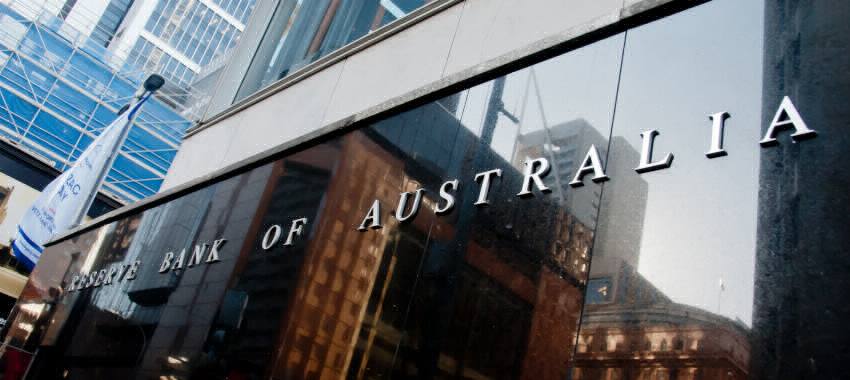
The central bank has revealed in its first meeting of the year that it will drop the cash rate for the first time since November 2020.
The Reserve Bank of Australia (RBA) has announced a long-awaited cash rate cut, lowering the rate by 25 bps from 4.35 per cent to 4.10 per cent.
The decision - the last one for the single RBA board - marks the beginning of the first rate-easing cycle for four years and breaks a streak of nine consecutive announcements where the central bank kept the cash rate unchanged.
It has been more than a year since the cash rate last moved (it increased 25 bps in November 2023).
The decision, which was announced on Tuesday afternoon (18 February), was broadly anticipated by economists and all four major banks as the central bank continues to work to bring inflation into its target band of 2–3 per cent.
The latest quarterly inflation figures showed that the Consumer Price Index (CPI) remained within the RBA's target range for the second quarter in a row. The CPI rose by 0.2 per cent in the December quarter, taking the annual inflation down to 2.4 per cent, easing from 2.8 per cent the previous quarter.
However, underlying inflation was still slightly higher than the RBA’s target band, with the trimmed mean annual inflation at 3.2 per cent.
In a statement following the rate decision, the RBA board said that underlying inflation was moderating.
“Inflation has fallen substantially since the peak in 2022, as higher interest rates have been working to bring aggregate demand and supply closer towards balance. In the December quarter underlying inflation was 3.2 per cent, which suggests inflationary pressures are easing a little more quickly than expected,” it said.
The board added that it had "more confidence that inflation is moving sustainably towards the midpoint of the 2–3 per cent target range".
RBA governor Michele Bullock highlighted that inflationary pressures were easing.
"In December, we said we gained confidence that things were headed in the right direction."
"Now we're at a point where underlying inflation is at 3.2 per cent and headline inflation is 2.4 per cent inflation has eased over the past three quarters, and in the most recent quarter, a bit more than our forecasts had anticipated. This has increased our confidence further," she stated.
"It's clear that higher interest rates have been working as anticipated, restricting economic activity and putting downward pressure on inflation," she told reporters at a media conference.
Looking ahead, the board warned that upside risks remain, highlighting that it “remains cautious on prospects for further policy easing.”
“Growth in output has been weak, private domestic demand is recovering a little more slowly than earlier expected, and there is uncertainty around the extent to which the recovery in household spending in late 2024 will persist,” the board said.
Treasurer Jim Chalmers hailed the "substantial and sustained" progress made on inflation, saying: "Today’s decision and the statement from the board gives us further confidence that the worst of the inflation challenge is behind us".
The RBA has also amended its quarterly Statement of Monetary Policy. In November it stated that the RBA expected inflation to reach 2.5 per cent by late 2026. However the February statement listed expected underlying inflation to return to the 2–3 per cent target range this year.
Industry welcomes rate cut
The broking industry welcomed the RBA’s decision to reduce interest rates and major banks – including Westpac, ANZ, National Australia Bank (NAB), and the Commonwealth Bank of Australia (CBA) – have all already confirmed they will be reducing rates for variable rate borrowers by 25 bps.
The Mortgage and Finance Association of Australia (MFAA) applauded the move by the RBA, describing it as a "positive step for Australian homeowners".
“The Reserve Bank’s decision will provide some much-needed relief for mortgage holders, as well as boosting borrowing capacity for prospective buyers,” MFAA CEO Anja Pannek said.
Mortgage Choice CEO Anthony Waldron said he had seen loan submissions spike to record levels in January amid general expectations of lower rates from borrowers.
“This decision will be welcomed by borrowers and hopeful buyers who have been waiting for home loan interest rates to fall,” Waldron said.
“In a sign that borrowers are expecting rates to fall further, 96 per cent of loans submitted by our brokers in January 2025 were for variable rate home loan products.”
Commenting on how the change would impact the market, he said: “With this rate cut, I think we can expect competition to heat up in the home loan market and I encourage borrowers to seize this opportunity to secure a better rate.”
Mark Haron, executive director at mortgage aggregator Connective, said lower rates would provide “much-needed stability for borrowers”.
“Today’s RBA decision to cut interest rates marks a pivotal moment for many borrowers who have been managing higher repayments over the past few years,” Haron said.
“While we have not seen a significant rise in arrears, more customers are reaching out to their banks for relief – a sign of financial strain that this rate cut may help ease.”
Resolve Finance managing director Don Crellin described the rate cut as a “game changer”.
“Breathing room has arrived for borrowers after 13 relentless rate hikes,” Crellin said.
“This move marks a turning point. Inflation is finally cooling, and the RBA’s data-driven approach shows we’re entering a long-awaited easing cycle.”
Following the rate cut decision, Loan Market CEO David McQueen said brokers needed to explain to clients that not all lenders would pass on the full cut and some will take their time.
Commenting on how lower rates could impact brokers, McQueen said that pre-approval for buyers was crucial: “Lower rates will drive more competition in the property market. Buyers need to be pre-approved now to secure their spot ahead of the rush so ensure these conversations are happening.”
Will there be more cuts this year?
Before the rate drop, all four major banks were forecasting the RBA to lower its cash rate target again this year.
Australia and New Zealand Bank (ANZ) expected one more 2025 cut in August when the bank was forecasting a 3.85 per cent cash rate.
National Australia Bank (NAB) was forecasting a rate-cutting phase to be “gradual”, with the RBA taking the cash rate down to 3.1 per cent by February 2026.
Both Westpac and Commonwealth Bank of Australia (CBA) expected at least two more cuts this year, with both tipping the cash rate to drop to 3.35 per cent by the end of 2025.
Commenting on future interest rate decisions, CoreLogic research director Tim Lawless said that a rapid or significant rate-cutting cycle in the near term remained unlikely.
“The RBA is likely to remain alert to the data flows, with persistently tight labour markets, a weak Australian dollar and elevated levels of global uncertainty remaining as downside factors that are likely to keep the loosening cycle a gradual and cautious one,” he said.
Finsure CEO Simon Bednar said that he predicted more rate drops this year: “I expect another rate cut mid-year as the RBA assesses how the February reduction impacts consumer spending and inflation.
“I think a reduction in February will invigorate consumer interest in house purchasing and selling, but this could add additional pressure to home prices for those wanting to enter the market.”
The RBA is scheduled to meet seven more times this year; roughly every six weeks.
Those dates include:
- 31 March to 1 April
- 19–20 May
- 7–8 July
- 11–12 August
- 29–30 September
- 3–4 November
- 8–9 December
[Related: Bank reveals which rates would trigger ‘considerable’ home buying]
 Login
Login










JOIN THE DISCUSSION